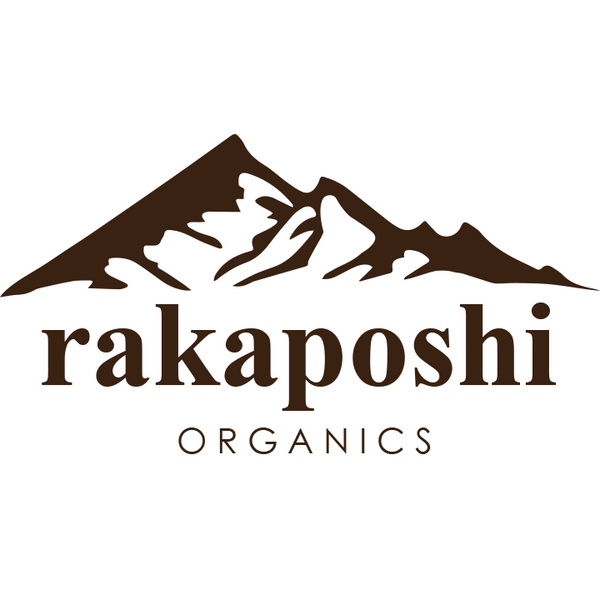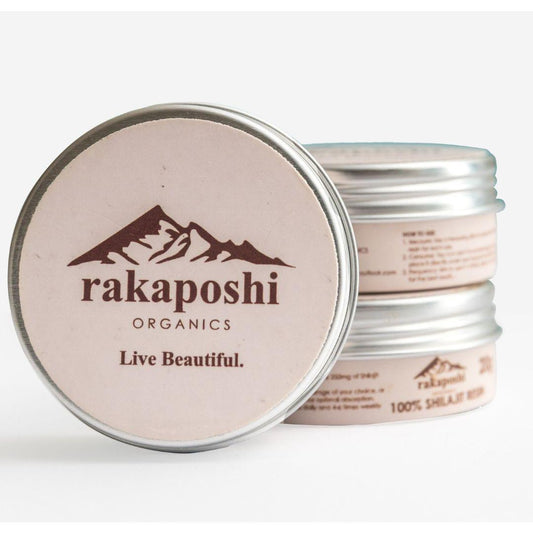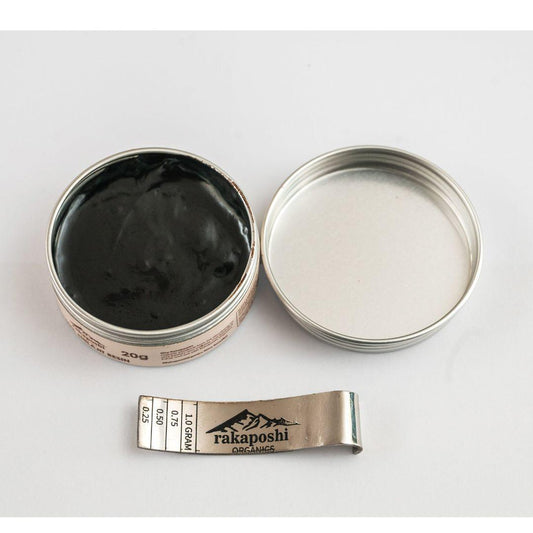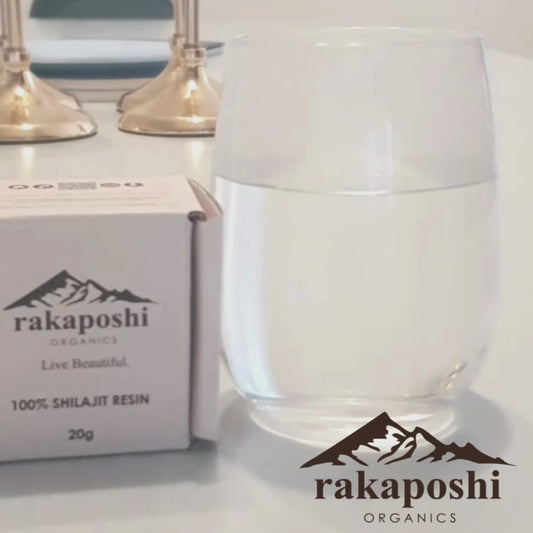
Rebuilding Muscle & Strength at Any Age: A Timeless Path to Strength
Share
Muscle loss, whether due to aging, illness, or inactivity, can significantly impact your quality of life. The weakening of muscles can lead to reduced mobility, increased risk of falls, and a decline in overall well-being. However, the good news is that rebuilding muscle and strength is possible at any age. With the right combination of targeted exercises, proper nutrition, mental resilience, and holistic supplements like Shilajit, you can effectively restore and maintain muscle mass for long-term health. In this article, we'll explore the essential strategies for combating muscle atrophy and regaining strength, particularly for older adults and those recovering from periods of inactivity.
Understanding Muscle Atrophy
Muscle atrophy refers to the loss of muscle tissue due to disuse, illness, or aging. It can happen more rapidly than most people realize—sometimes within just a few days of inactivity. For example, a person bedridden due to illness or recovering from surgery may experience significant muscle loss in a short period. This rapid degradation underscores the importance of staying as active as possible, especially during recovery periods.
Several factors contribute to muscle atrophy, including a decrease in physical activity, poor nutrition, and the natural aging process. When muscles aren’t regularly engaged through movement or exercise, they begin to weaken and shrink. This is particularly concerning for older adults, as muscle mass naturally decreases with age, making it even more critical to address any loss quickly.
The Impact of Aging on Muscle Mass
As we age, our bodies undergo various changes, one of the most significant being the gradual loss of muscle mass and strength—a condition known as sarcopenia. Sarcopenia is a natural part of the aging process, but its effects can be mitigated through proactive measures. The decline in muscle mass isn’t just about aesthetics; it has profound implications for overall health. Reduced muscle strength can lead to decreased mobility, higher risk of falls, and a loss of independence.
Sarcopenia is associated with various factors, including hormonal changes, decreased physical activity, and inadequate protein intake. Additionally, chronic inflammation, common in older adults, can exacerbate muscle loss. The good news is that sarcopenia isn’t inevitable. By understanding its causes and taking action early, you can preserve your muscle mass and maintain a higher quality of life as you age.
Inflammation and Muscle Recovery
Inflammation plays a dual role in muscle health. On one hand, acute inflammation is a natural part of the body’s healing process, helping to repair damaged tissues and promote recovery. For example, after a workout, muscles may become inflamed as they repair and grow stronger. However, chronic inflammation—often a result of poor diet, stress, or underlying health conditions—can hinder muscle regeneration and contribute to further muscle loss.
For those recovering from illness or injury, managing inflammation is crucial. This can be achieved through a combination of dietary changes, stress management, and natural supplements. A diet rich in anti-inflammatory foods, such as leafy greens, berries, and fatty fish, can help reduce chronic inflammation and support muscle recovery. Additionally, supplements like Shilajit, known for their anti-inflammatory properties, can be a valuable addition to your recovery regimen.
Rebuilding Muscle: Strategies That Work
Rebuilding muscle and strength requires a multifaceted approach. Here are some key strategies that can help you regain muscle mass and improve overall health:
- Exercise: The foundation of any muscle recovery plan is regular physical activity. Strength training exercises are particularly effective in rebuilding muscle mass. Start with low-impact exercises that focus on strength and flexibility, such as resistance bands, bodyweight exercises, or light weightlifting. As your strength improves, gradually increase the intensity and duration of your workouts. Consistency is key—aim to engage in strength training exercises at least two to three times a week.
- Nutrition: Proper nutrition is essential for muscle repair and growth. Protein, in particular, is a critical nutrient for rebuilding muscle. Ensure your diet includes high-quality protein sources such as lean meats, eggs, dairy, and plant-based options like beans and legumes. Additionally, consuming a variety of vitamins and minerals, including vitamin D and calcium, supports muscle health. Incorporating anti-inflammatory foods can further aid in recovery.
- Supplementation: Natural supplements can enhance muscle recovery and overall well-being. Shilajit, a potent resin found in the Himalayas, is rich in fulvic acid and essential minerals. It has been used for centuries in Ayurvedic medicine to improve energy levels, reduce inflammation, and support overall health. Shilajit can be particularly beneficial for those recovering from muscle atrophy, as it helps boost physical stamina, reduces fatigue, and supports the body’s natural healing processes.
- Mental Resilience: Physical recovery isn’t just about the body—it’s also about the mind. Mental resilience, grit, and a positive mindset are critical components of any recovery plan. The journey to rebuilding muscle can be challenging, especially when progress seems slow. It’s important to stay motivated and disciplined, even when faced with setbacks. Developing a strong support system, setting realistic goals, and celebrating small victories can help maintain your momentum.
Practical Tips for Recovery
To maximize the effectiveness of your muscle recovery plan, consider the following practical tips:
- Start Slow: If you’re recovering from an illness or period of inactivity, it’s important to start slow and gradually increase the intensity of your workouts. This approach helps prevent injury and allows your body to adjust to the demands of exercise.
- Focus on Technique: Proper technique is essential for preventing injuries and ensuring you’re effectively targeting the right muscle groups. If you’re unsure about your form, consider working with a trainer or physical therapist.
- Incorporate Rest Days: Rest is just as important as exercise when it comes to rebuilding muscle. Make sure to include rest days in your workout routine to allow your muscles to recover and grow.
- Stay Hydrated: Hydration is often overlooked, but it plays a crucial role in muscle recovery. Drinking enough water helps maintain muscle function and aids in the repair process.
- Monitor Your Progress: Keep track of your workouts, nutrition, and overall progress. Monitoring your gains can provide motivation and help you make necessary adjustments to your routine.
The Role of Shilajit in Muscle Recovery
Shilajit is a powerful natural supplement that can enhance your muscle recovery efforts. Derived from decomposed plant material found in the Himalayan mountains, Shilajit is rich in fulvic acid, a compound known for its ability to enhance nutrient absorption and improve cellular function. It also contains over 80 minerals that are essential for overall health.
For those looking to rebuild muscle, Shilajit offers several benefits:
- Increased Energy Levels: Shilajit helps increase ATP production, the body’s primary energy source. This boost in energy can enhance physical performance and endurance during workouts.
- Reduced Inflammation: Shilajit’s anti-inflammatory properties can help manage chronic inflammation, which is crucial for effective muscle recovery.
- Enhanced Nutrient Absorption: The fulvic acid in Shilajit improves the absorption of nutrients, ensuring your body gets the most out of the foods and supplements you consume.
- Support for Bone Health: Shilajit also supports bone health, which is essential for maintaining overall strength and preventing injuries during physical activity.
Incorporating Shilajit into your recovery plan can provide a natural boost to your efforts, helping you rebuild muscle and strength more effectively.
Rebuilding muscle and strength is achievable at any age with the right approach. By focusing on regular exercise, proper nutrition, mental resilience, and holistic supplements like Shilajit, you can restore and maintain your muscle mass for a healthier, more active life. Remember, the journey to recovery requires patience and consistency, but the rewards—greater strength, improved mobility, and enhanced overall well-being—are well worth the effort.
If you’re looking for a natural supplement to support your recovery, consider adding our premium Himalayan Shilajit to your regimen. It’s a powerful tool that can help you achieve your muscle recovery goals and enjoy long-term health benefits.



